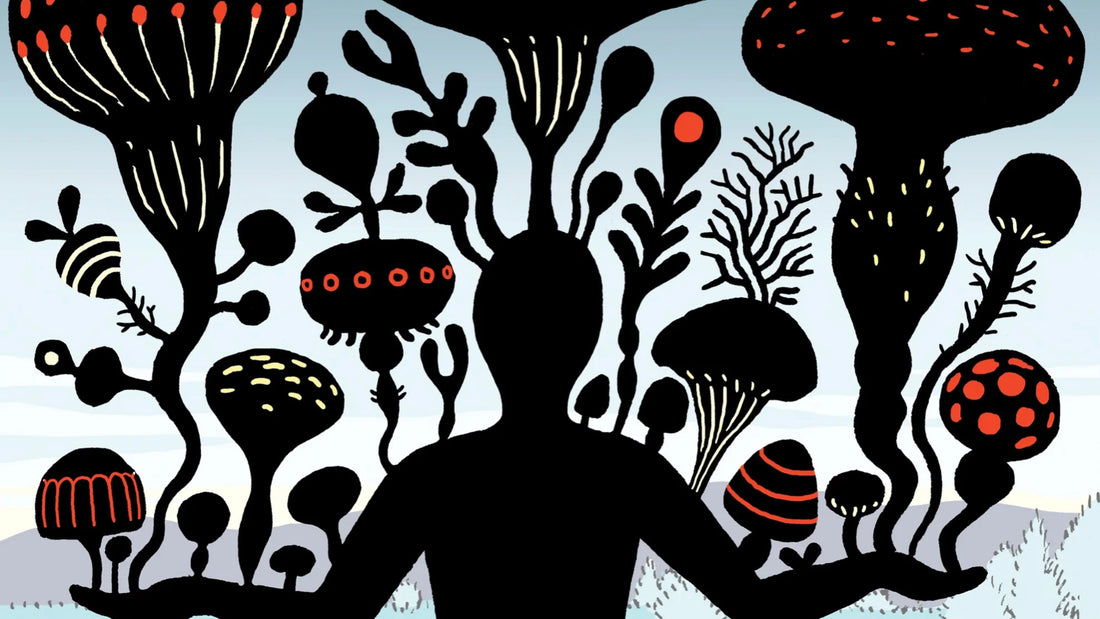
5 Mind-Blowing Mycelium Facts
Share
We describe mycelium as the root system for fungi and nature’s great decomposer. It is the vegitative part of the fungus that branches out underground in a network, breaking down organic and inorganic matter.
While mushrooms are all the rage (and for good reason), the mushroom is just the fruit that emerges under ideal growing conditions. It’s the tip of the iceberg.
Up until recently, our understanding of mycelium has been very limited. But, that’s slowly changing and the more we learn, the more we realize how little we know about this amazing and varied organism.
Let’s get into some facts you probably didn’t know about mycelium...
Mycelium is restoring the soil after wildfires

[Image via Doug Beckers via Flickr]
When wildfires ravage populated areas, the soil becomes heavily contaminated with the toxic materials that comprise our homes and other possessions. These chemicals can then find their way into our water sources.
Following the 2017 fires in Northern California, fire remediation experts and ecologists teamed up to test a potential improvement on the “scrape and burn” method that involves digging up the soil and incinerating it to remove the toxic chemicals. Instead, they created “wattles”, channels that diverted run-off into mycelium beds that “digested” the hazardous compounds and converted them into nutrients that actually improve the soil.
Mycelium threads are being used as an alternative to leather, silk and other textiles

[Image via adidas News]
Because of its thread-like structure, the fashion industry has recently caught on to the potential of mycelium as a more sustainable textile. Companies like Mylo have created a mycelium-based alternative to leather. This spring adidas unveiled a mycelium-based take on its iconic Stan Smith sneaker, and Lululemon has plans for mycelium-based workout apparel.
The fashion industry is one of the highest polluting sectors in the world, making this type of application particularly promising.
Mycelium is cleaning up toxic radiation at Chernobyl

[Image via Ukranian Presidential Press Office AP]
Scientists have discovered a species of mycelium that is actually eating the radiation at the world’s most toxic place. The fungi actually grows towards the most radioactive places and then decomposes materials like graphite.
There are tons of potential applications for this including protecting humans from radiation, as a renewable energy source and in everything from space travel to medicine and manufacturing. Read on...
Plants are networked together by mycelium

[Image via BBC News, How Trees Secretly Talk to Each Other]
Plants are connected underground via incomprehensibly complex networks of mycelium. The mycelium attach to root structures forming networks that are referred to as the “wood wide web” (cute).
These mycelium networks are a way to exchange nutrients as plants send carbon-rich sugar captured during photosynthesis and mycelium returns nutrients like phosphorus and nitrogen that have been acquired in the soil (a process plants can’t do on their own). More than 90% of all plants depend on these mycorrhizae fungi for nutrients. But, it gets better..
Mycelium might be an intelligent life-form

[Image via Ander Nilsen, The New Yorker, The Secret Lives of Fungi]
Stay with us here. Hyphae, the tips of the mycelium threads that branch outward searching for nutrients and connections, can be responsive to changing light, wind, temperature, moisture, textures, and electrical fields. It can sense and navigate around objects. It can solve mazes to locate the fastest path to the exit. It communicates a wide range of information to other organisms. It even demonstrates a capacity for memory.
This question all comes down to semantics and how we define intelligence of which humans have always been the de facto baseline. But, when you start to think about the list above, the differences between fungi and animals starts to get a lot smaller than we’re inclined to believe.

1 comment
Amazing read! Thank you for this very insightful, eye-opening and interesting find!